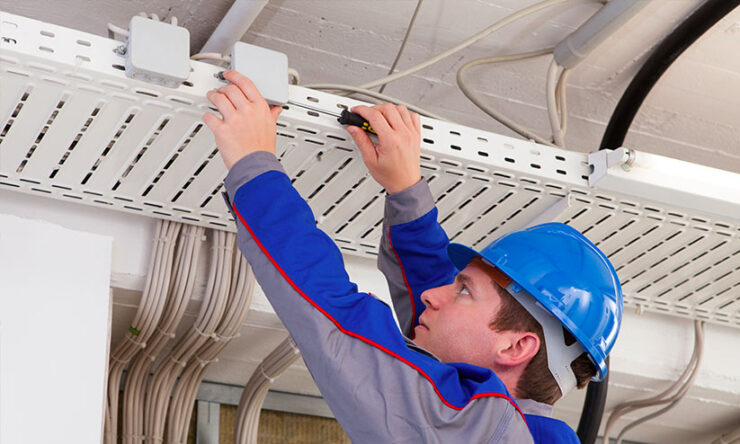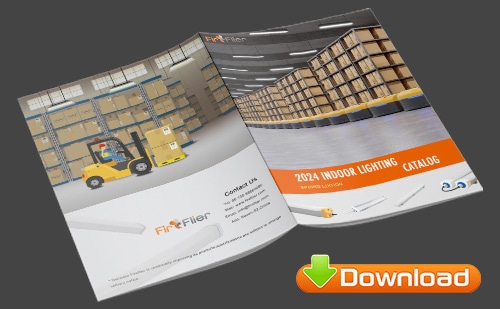Brighten up your space in the most energy-efficient way possible by installing LED High Bay Lighting. If you’re on the fence about whether to take the leap, this comprehensive guide will light your way to the best decision!
Table of Contents
What is LED High Bay Lighting?
LED High Bay Lighting is a powerful and efficient lighting solution, often used in commercial and industrial environments. They’re specially designed to illuminate large areas with high ceilings – think warehouses, gymnasiums, manufacturing plants, and supermarkets. But how does it fare compared to traditional lighting systems?
Why Choose LED High Bay Lighting?
Energy Efficiency LED High Bay Lighting can provide the same illumination as traditional lights while using significantly less energy. This results in substantial cost savings in the long run.
Longer Lifespan LED lights have a much longer lifespan than their counterparts, often lasting for up to 50,000 hours or more.
Better Light Quality LED High Bay Lighting offers better light quality, with a high color rendering index (CRI) and less flicker.
Environmental Impact LED lights are much more eco-friendly, as they don’t contain harmful substances like mercury, found in traditional lighting.
Components of LED High Bay Lighting
LED High Bay Lighting systems have several components that all play a part in creating its powerful light.
LED Chips These are the primary light source in an LED High Bay Lighting system. They’re responsible for the light’s color and intensity.
Heat Sink A heat sink absorbs the heat generated by the LED chips, helping to keep the system cool and increase the lifespan of the lights.
Driver This component regulates the power that reaches the LED chips. It’s crucial for the LED’s performance and lifespan.
Housing This is the outer casing that protects the internal components. It’s usually made from materials that are durable and resistant to corrosion.
Pre-Installation Checklist
Before you dive headfirst into installing your LED High Bay Lighting system, you’ll need to do a bit of groundwork. Trust me, it’s better to have all your ducks in a row before you start.
- Choose the right LED High Bay Light: Consider the height of your ceiling, the size of the space, and the nature of activities conducted in the space.
- Gather necessary tools: Basic tools like a ladder, screwdrivers, and wire strippers are essential.
- Safety gear: Don’t forget your safety goggles, gloves, and protective clothing.
- Check the wiring: Ensure the electrical wiring in your building can handle the new installation.
Step-by-Step Guide to Installing LED High Bay Lighting
Hold your horses! Installing LED High Bay Lighting might seem like a daunting task, but with the right guidance, you can tackle it like a pro. Here’s a step-by-step guide that’ll have you lighting up your space in no time.
- Turn off the power
- Remove the old light fixture
- Install the new LED High Bay Light
- Connect the wires
- Secure the light fixture
- Turn on the power and test
Safety Measures during Installation
Safety first, folks! When dealing with electrical installations, there are several precautions you should take to ensure your safety and the safety of others.
Turn off the Power Always remember to switch off the power at the mains before you begin the installation.
Use Proper Tools Ensure that your tools are in good condition and suited for the job at hand.
Wear Safety Gear A pair of safety goggles and gloves can go a long way in protecting you from potential injuries.
Maintenance and Troubleshooting
Congratulations, you’ve installed your LED High Bay Lighting! But your job doesn’t end here. Regular maintenance and troubleshooting are key to extending the lifespan of your lights.
Cleaning Keep your lights dust-free by cleaning them regularly. A soft, dry cloth should do the trick.
Checking Connections Regularly check the connections for any signs of wear and tear.
Replacing Components Over time, some components might need to be replaced. Be sure to use compatible, high-quality parts.
Understanding LED High Bay Lighting Specifications
When you’re shopping for LED High Bay Lighting, you’ll come across several specifications. Don’t let the jargon throw you for a loop. Here’s a simple explanation of the most common specifications.
Lumens This measures the total amount of visible light emitted by the source. The higher the lumens, the brighter the light.
Wattage This is the amount of electricity the light uses. Lower wattage means lower energy consumption.
Color Temperature Measured in Kelvins, this determines whether the light appears more yellow (lower Kelvin) or white/blue (higher Kelvin).
FAQs
1. Can I install LED High Bay Lighting myself? Yes, with the right tools and safety measures, you can install LED High Bay Lighting yourself.
2. How often should I clean my LED High Bay Lights? Depending on the environment, you should clean your lights at least once every six months.
3. What happens if the LED driver fails? If the LED driver fails, the light will not function. You will need to replace the driver.
4. Are LED High Bay Lights dimmable? Some models are dimmable, but you should always check the product specifications before purchase.
5. How high should I install my LED High Bay Lights? Typically, LED High Bay Lights are installed 20-40 feet above the floor.
6. Are LED High Bay Lights suitable for outdoor use? Yes, many LED High Bay Lights are rated for outdoor use, but always check the product specifications.
Conclusion
Installing LED High Bay Lighting might seem like a big task, but with this comprehensive guide, you’re well equipped to tackle it. With their energy efficiency, long lifespan, and superior light quality, LED High Bay Lights are a smart choice for any high-ceiling space. So roll up your sleeves, get your tools, and light up your world!


